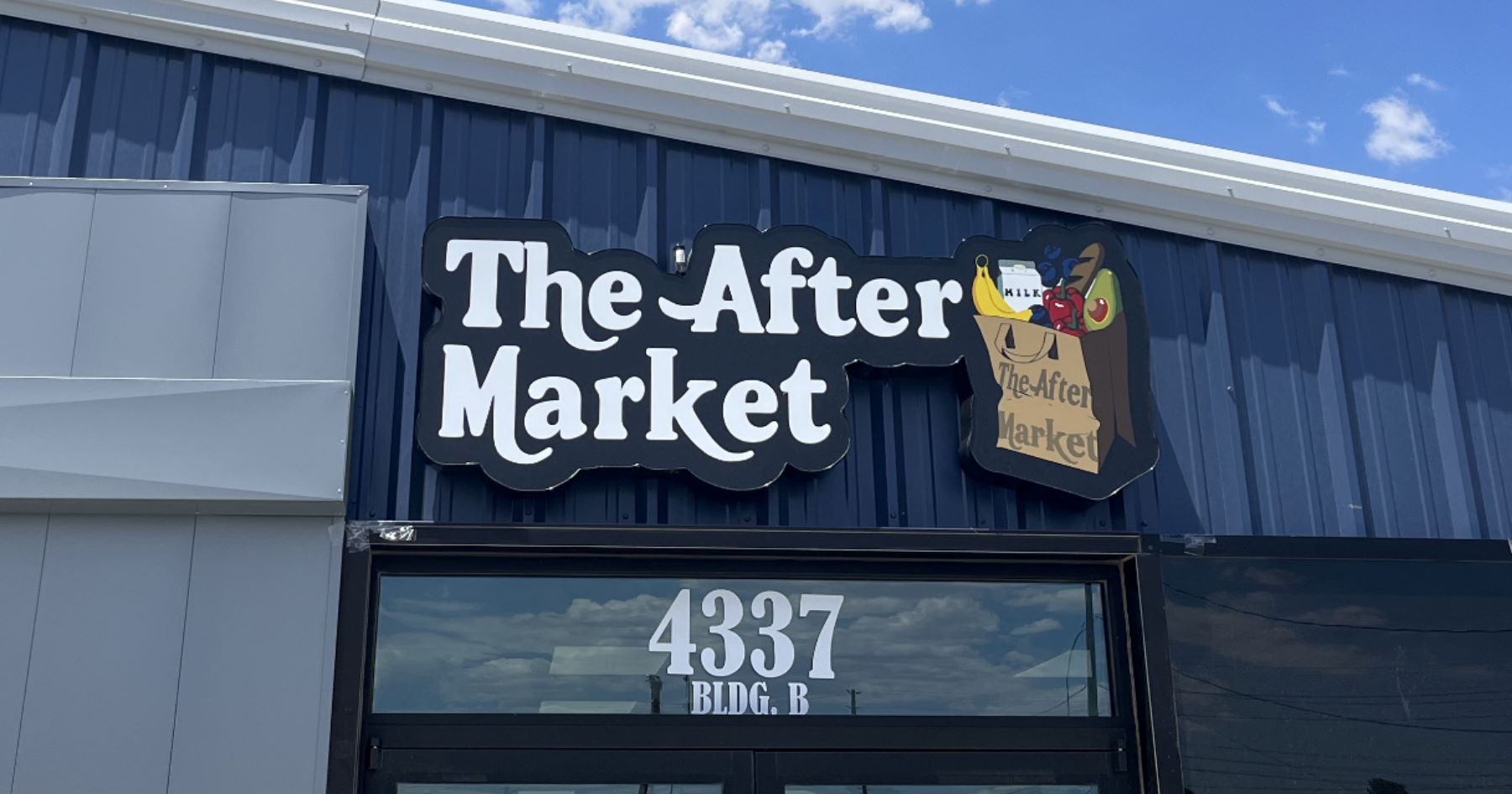The After Market in Las Vegas is seeking to serve dual roles in the community it serves: providing access to healthy, affordable groceries in a former food desert, and at the same time providing free food to those in need.
The hybrid grocery store/food pantry opened in June in an underserved area where the nearest traditional grocery store is more than 5 miles away, said DeWayne McCoy, CEO of The After Market and senior pastor at The Foundation Christian Center, which operates the facility. The store is located next to Nellis Air Force Base, on the northeastern outskirts of the city.
McCoy, who bagged groceries at a Piggly Wiggly supermarket in Louisiana as a teenager, also spent seven years working at the Three Square food bank in Las Vegas. He said the hybrid setup of The After Market, which is divided into two shopping areas for free and paid groceries, is seeking to solve some of the challenges associated with traditional food banks.
“[The After Market] eliminates the embarrassment of having to stand in line to get assistance, because it’s inside a grocery store,” McCoy told SFA News Daily. “When you walk out of the store, nobody knows if you make $100,000 a year or are on a fixed income, because of the way the store is set up.”
In addition, he said, the food pantry side of the building allows customers to shop based on their specific needs, unlike many food pantries that pre-package groceries into boxes for distribution.
“If you give a homeless person chicken or potatoes, they have no place to cook it,” he said. “Here, people can choose for themselves. A homeless person will take the peel-top can of corn or the peel-top can of beans, because they understand that they can’t cook it.”
The After Market devotes about 80 percent of its space, or about 4,000 square feet, to the paid side of the store, offering fresh meat and produce and shelf-stable groceries for sale. It accepts EBT payment as well as cash and other digital and card-based payment methods. The other 20 percent of the space is dedicated to the free food pantry, offering mostly private-label grocery items procured from the Three Square food bank, donations, and government-funded supply programs. The two sides are separated by a low wall so that shoppers can see what products are available on either side.
McCoy said customers often shop on the paid side early in the month when they have received their EBT payments, then shop the free pantry side when their budgets get tight toward the end of the month. In addition, sometimes shoppers start their shopping trip on the free side, and then return to supplement their needs by purchasing items from the paid side, which offers more name brands and a wider variety of items to choose from.
The project has been funded by a grant from the American Rescue Plan Act of 2020, the COVID-era program that provided some funds for food assistance programs. It also accepts donations through its website at theaftermarketlv.org.
The paid side of the operation currently generates about 35-40 percent of the funds it would need in order to be self-sustaining, McCoy said, but he hopes that percentage will continue to increase. The grant funds will last another six months, he said, and he’s prepared to seek additional funding, if needed. His goal is for the operation to be 100 percent self-sustaining, he said.
“It is easier to get help when you are helping yourself,” McCoy said. “If we only bring in 50 percent of what we need, [potential donors] will see that we are making an effort, and not just relying on them.”
The After Market currently has 10 paid employees. The paid side of the store is open Tuesday through Saturday from 7 a.m. to 7 p.m., and the free pantry side is open Tuesday through Saturday from 10 a.m. to 4 p.m.
In addition to the grocery offerings, the store also has a kitchen on premises that will be used to offer prepared foods for takeout, McCoy said. He’s currently searching for a cook to operate that aspect of the business. By offering prepared foods for takeout only, McCoy said he hopes to reduce the loitering and litter that can come with on-site dining.
Although theft has been a concern for some traditional supermarkets in underserved areas, McCoy said the fact that the pantry offers items for free seems to discourage shoplifting from the paid side.
“We are giving you food, so why would you steal food?” he said.
In addition, the store does not carry any nonfood items, which are often the target of thieves.
“Our shrink has not been because of theft,” said McCoy. “Any shrink we have had has been because we are still learning what it is that the community likes.”
With so many Air Force families from all over the country living near the store, it has been a challenge to source the right products that meet their diverse preferences, he explained. He’s currently seeking distributors that can help meet his sourcing needs.
McCoy said he hopes to someday be able to replicate the hybrid grocery store/food pantry model in other areas.
“My goal is to have one of these in all of the communities that Walmart won’t go to, or that Smith’s doesn’t feel will sustain a major grocery chain,” he said.
Related: Whole Foods Sets New Pollinator Health Standards; Grocers Future Proof With AI.

